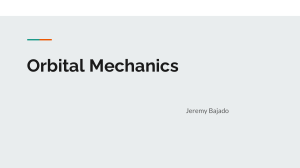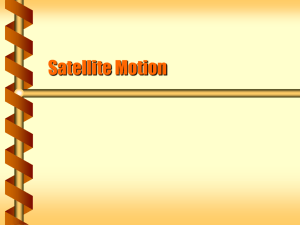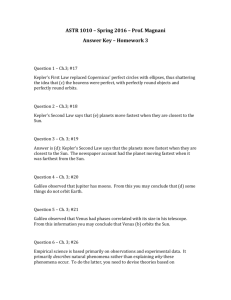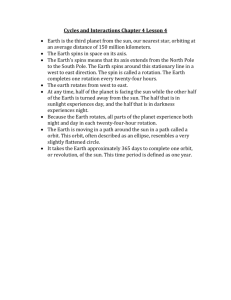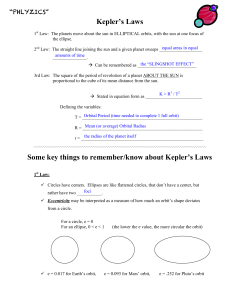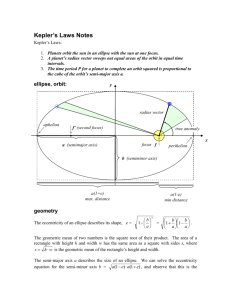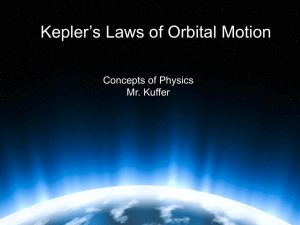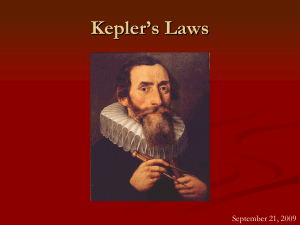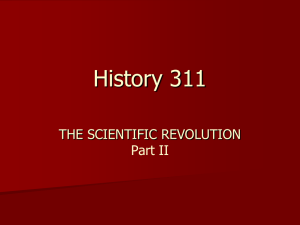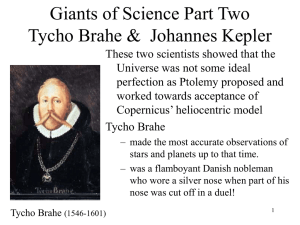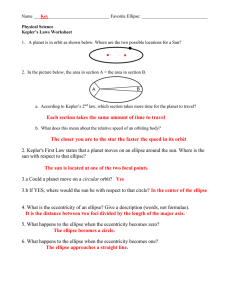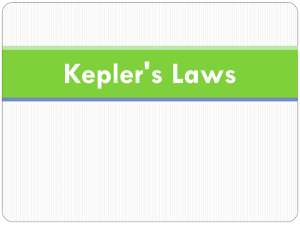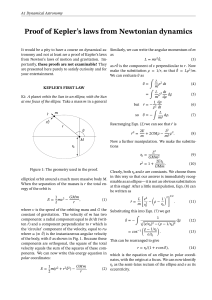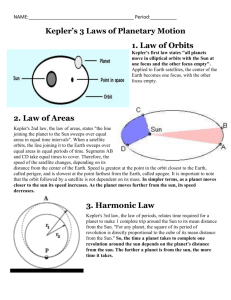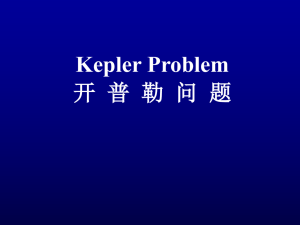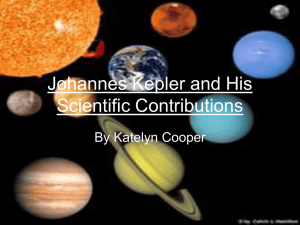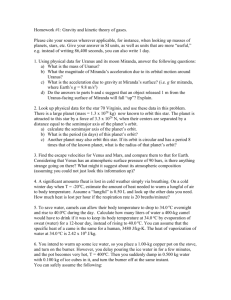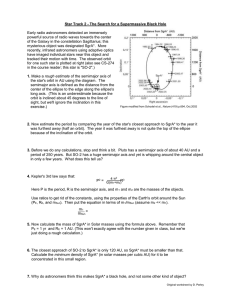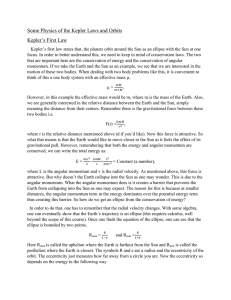Kepler's Laws
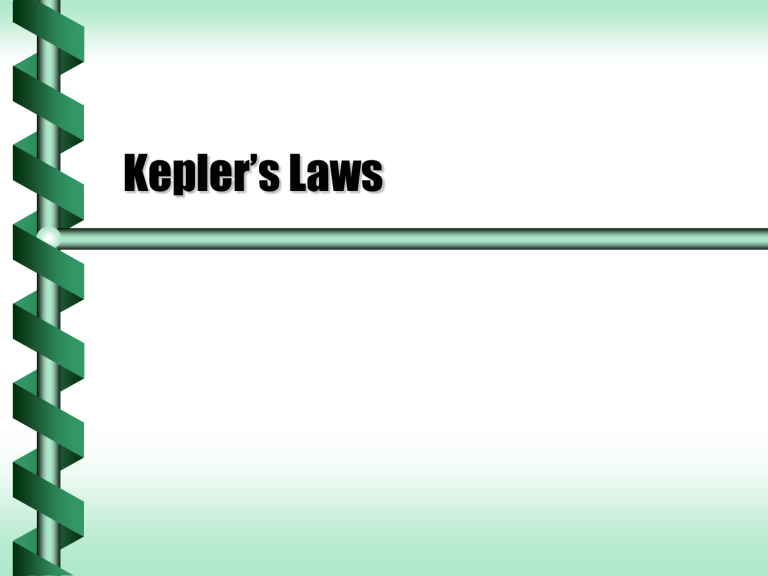
Kepler’s Laws
Testing Models
Geocentric (or Ptolemaic ) means the Earth is at the center and motionless.
Heliocentric (or Copernican ) means the Sun is at the center and motionless.
Scholars wanted to differentiate models by comparing the predictions with precise observations.
This originated the modern scientific method .
Kepler’s Work
Tycho Brahe led a team which collected data on the position of the planets (1580-
1600 with no telescopes).
Mathematician Johannes
Kepler was hired by Brahe to analyze the data.
He took 20 years of data on position and relative distance.
No calculus, no graph paper, no log tables.
Both Ptolemy and
Copernicus were wrong.
He determined 3 laws of planetary motion (1600-
1630).
Kepler’s First Law
The orbit of a planet is an ellipse with the sun at one focus.
A path connecting the two foci to the ellipse always has the same length.
Orbital Description
An ellipse is described by two axes.
• Long – semimajor ( a )
• Short – semiminor ( b )
The area is p ab (becomes p r 2 for a circle).
b a
Orbital Speed
The centripetal force is due to gravity.
• GMm / r 2 = mv 2 / r
• v 2 = GM / r
Larger radius orbit means slower speed.
Within an ellipse larger distance also gives slower speed.
Kepler’s Second Law
The line joining a planet and the sun sweeps equal areas in equal time.
D t
The planet moves slowly here.
D t
The planet moves quickly here.
Orbital Period
The speed is related to the period in a circular orbit.
• v 2 = GM / r
• (2 p r / T ) 2 = GM / r
• T 2 = 4 p
2 r 3 /GM
Larger radius orbit means longer period.
Within an ellipse, a larger semimajor axis also gives a longer period.
Kepler’s Third Law
The square of a planet’s period is proportional to the cube of the length of the orbit’s semimajor axis.
• T 2 / a 3 = constant
• The constant is the same for all objects orbiting the Sun semimajor axis : a direction of orbit
The time for one orbit is one period: T
Hyperbolic Orbits
Some satellites have so much speed that gravity can’t hold them in an orbit.
These objects take a hyperbolic orbit that never returns.
